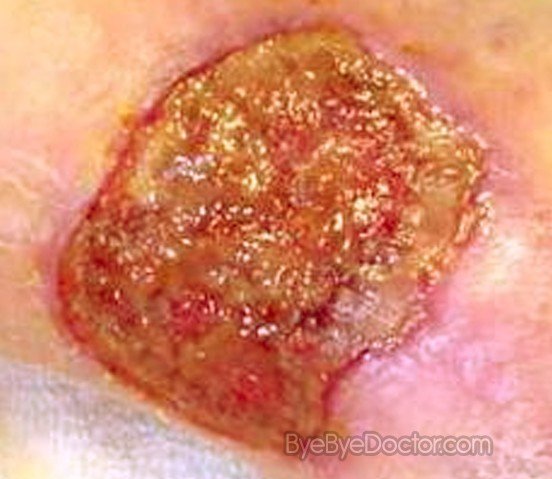Wound Infection Symptoms
The classic signs of wound infection include:
- Erythema that is localised
- Pain that is localised
- Cellulitis
- Oedema
- High or low body temperature
- Reduced blood pressure
- Increased heart beat
- Increased purulent discharge (blood or other fluid) or pus coming out of the wound
- Increased swelling that is persistent and goes past the wound area
- Red, painful, warm swollen areas
- Delayed healing of wounds upon treatment
- Old wounds that bleed easily
- Painful wounds although they appear mild
Wound Infection Causes
Majority of micro-organisms can only be observed microscopically due to their minute sizes. Ways in which micro-organisms can gain access to a wound:
- Direct contact which involves the transfer of pathogenic microorganisms from equipment or the hands of carers
- Airborne dispersal where micro-organisms are deposited from the surrounding air
- Self-contamination which involves physical migration from the patient’s skin or gastrointestinal tract
Bacteria: Bacteria associated with wound infections include
Gram-positive cocci:
- Streptococcus pyogenes which is a pus forming Beta Haemolytic Streptococcci
- Enterococci for instance Enterococcus faecalis
- Staphylococci for instance Methicillin resistant Staphylococcus aureus (MRSA)
The intensity of infection ranges in severity from simple wound colonisation that does not require aggressive treatment to systemic infection such as bronchopneumonia that is more often than not, fatal. A wound infected with MRSA is difficult to manage using antibiotics.
Gram negative aerobic rods e.g Pseudomonas aeruginosa
Gram negative facultative rods such as:
http://www.Symptoms-Causes-treatment.blogspot.com detect diseases at an early stage symptoms, and find out the causes and treatments best suited.
- Enterobacter species
- Escherichia coli
- Klebsiella species
- Proteus species
Anaerobic bacteria which include:
- Bacteroides species
- Clostridium species
Fungi
These are composed of large complicated single celled or multi-cellular organisms. Fungi are responsible for superficial infections of the skin, nails and hair and they have been isolated from wounds although they are rarely pathogenic. They include:
- Yeasts such as Candida species
- Aspergillus
Protozoa
These are single celled organisms within a fragile membrane but lack a cell wall. They have been significantly associated with infected skin ulcers.
Viruses
These comprise nucleic acid enclosed within a protein coat. Viruses do not cause wound infections per se, but bacterial infection of the skin may occur during the course of some viral diseases.
Wound Infection Treatment
Treatment depends on the severity of the wound infection is, its location, and whether the infection has spread to other areas. It may also depend on the length of time one has had the infection. The following measures need to be taken:
Care Plan
- Wound cleansing may be done by rinsing the wound with sterile water. Disinfectants may also be used to clean the wound.
- Wound debridement is done to clean and remove dirt, or dead skin and tissues from the area around the wound. The damaged areas in or around the wound may be cut out by caregivers and then bandages placed inside the wound and left to dry.
Medications
Antibiotic medicine may be administered to fight infection. Penicillin G and Metronidazole are the common antibiotics used for wound treatment. Medication to reduce pain, swelling, or fever may also be administered.
Other treatments
Medications to control or treat medical conditions that may slow down the wound healing process are also recommended. Regular uptake of medicines to control diseases such as diabetes or high blood pressure is advised. In case of blood vessel problems, surgery may be done to increase blood flow.
Changes in lifestyle
The patient may be given supplements or a special diet suggested so as to hasten the healing process. Fruit uptake is also recommended for instance Vitamin C, found in oranges and other foods, helps wounds heal. In case a patient smokes cigarettes, they may be forced to quit since this slows down the wound healing ability or process.
Factors affecting healing of wound infections:
- Diseases for instance diabetes, cancer, or liver, kidney or lung conditions are known to slow down wound healing process.
- Presence of foreign objects such as glass or metal, stuck in the wound and dead tissue may delay wound healing.
- Poor blood supply or low oxygen as a result of high blood pressure or narrowed blood vessels. This may be a common problem in smokers and people with blood vessel problems or heart disorders.
- Repeated trauma since constant pressure on wounds may increase the risk of having a wound infection, and subsequently delay healing.
- Surgery since infection of cuts made during invasive procedures like surgery, also called surgical site infection (SSI), are imminent.
Wound Infection Pictures



